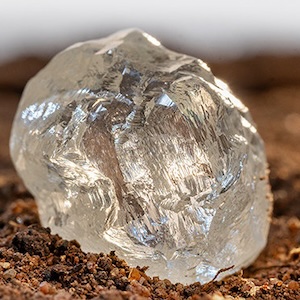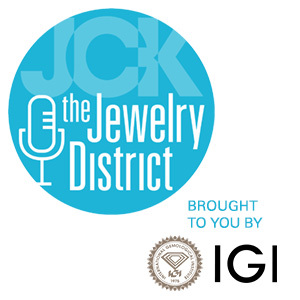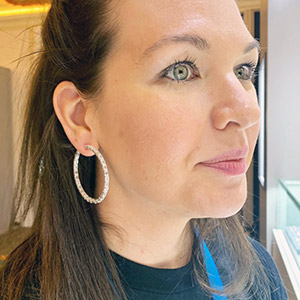
De Beers, which has historically been hesitant to specify the origin of its diamonds in its “aggregated” sight boxes, will now provide information on where diamonds over 1.25 cts. came from.
It’s a big change for the diamond giant: De Beers has traditionally branded its gems—which are sourced from Botswana, Namibia, South Africa, and Canada, then sold in mixed assortments—as “DTC” (for Diamond Trading Company) and, more recently, “Botswana sort.” But now it will collect country-of-origin information for each diamond and disseminate it through the Tracr diamond tracking program.
The stones will be tracked by “digital tags,” Tracr CEO Wesley Tucker tells JCK.
“We will still aggregate our diamonds in boxes,” he says. “But within that box we will be able to tell you which country it came from. And that [involves] scanning them pre-aggregation and then again post-aggregation and algorithmically matching the two together.
“Then, using the Tracr platform, we will pass that information along to retailers, laboratories, and manufacturers,… And if they rescan it at the manufacturer, they can then find the corresponding country of origin for that stone.”
Tracr users can do whatever they like with the information, Tucker says.
“If you’re a brand, you may not want to put country of origin into your store, but you might want it for your assurance systems,” he says. “Or if you’re a retailer and you want to create a program for diamonds that come from Botswana specifically, you can take all the diamonds from Botswana and put them in a Botswana program.”
This will enable “richer storytelling,” says Tucker.
“It’s a lot easier to say, ‘This diamond comes from this country’ than ‘It comes from one of four,'” he notes.
Identifying the origin of each diamond has proved a “fairly complex problem,” Tucker says, one that’s taken years to solve.
“We’ve been working on various options to do that,” he explains. “There is the idea of physically marking something, and the problem with that is the sheer volume of rough diamonds that miners deal with on a daily basis. There’s just too many of them to individually tag. We have looked at things like nano-dust and all sorts of weird, wonderful things, but physically marking each one is very difficult.
“The other option, which we settled on, is what we call optical scanning. Basically it creates an optical silhouette of the outside of the diamond. It doesn’t use inclusions, it just uses external [features], which is good for the next two to five years.
“More and more, we might look to technology to move into internals and inclusions,” Tucker says. “But I think for what we’re trying to do, this is by far good enough. Statistically it’s very, very difficult to swap diamonds at the rough-to-rough stage, because you’d have to find a diamond that looks entirely identical as rough.”
Currently, the program is limited to rough stones 1.25 cts. and larger, but after January it will extend to gems that produce polished diamonds of 0.5 ct. and above.
Though De Beers owns Tracr, last year, it made the tracking service open to the rest of the industry.
“We have non-sightholders on the platform already,” Tucker says. “But we’ve also brought on non–De Beers producers. The challenge we have is scanning at [the mine]. It’s a much more effective way of tracing diamonds. In order to come onto Tracr as a producer, you have to invest in scanning equipment, and that’s why it’s taken a little bit longer. So bringing [on other producers] is really important, but after January we think we’ll probably have three or four of the largest producers on.”
Some in the trade have been wary of De Beers’ claim that it won’t have access to the information on Tracr. De Beers has long promised that Tracr will eventually become independent, and Tucker pledges the company will follow through on that.
“We’ve always said that independence would be a staged process,” he says. “The first was, can Tracr as an entity operate independently? We feel comfortable now that our tracing works.”
Tucker adds that De Beers CEO Al Cook “has said that he wants to [lower] De Beers’ share in Tracr and we’ve actually started that process, and we’ll probably be able to [give an] update [on] that in a few months. It’s just a process that needs to happen.”
(Photo courtesy of De Beers)
- Subscribe to the JCK News Daily
- Subscribe to the JCK Special Report
- Follow JCK on Instagram: @jckmagazine
- Follow JCK on X: @jckmagazine
- Follow JCK on Facebook: @jckmagazine






